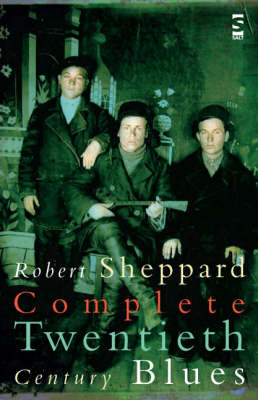Salt Modern Poets
2 total works
Complete Twentieth Century Blues is the definitive edition of a long network of interrelated texts that the author wrote and assembled as a time-based project between 1989 and the end of the last century. Many of the texts have appeared before, in both pamphlets and in critically acclaimed full-length volumes, but this edition has been revised throughout. It also includes a previously unpublished book-length text on the paintings of Jack B. Yeats, as well as a number of shorter pieces. All now appear in their intended order, and with their connections to other poems made apparent via an index. At the centre of the book is the sequence The Lores, written according to a strict word count and introducing the politics and poetics of `creative linkage’ demonstrated throughout. It focuses upon fascism and resistances to it. Running through the volume are the `Empty Diaires’ which offer an alternative history of the twentieth century, told through a series of female narrators. Woven between these are poems on blues music, the first Gulf War, Stalin’s poems, failed utopias, the Earl of Rochester, a sci-fi elegy for the human, a translation from Horace, the ideology of Thatcherism, atheist hymns, a hilarious romp with a very rude Robinson Crusoe, homages to various other artists, and an elegy to Frank Sinatra. The hilarious Wayne Pratt spoofs find their final resting place here too. The prose-poem essay, `The End of the Twentieth Century’, brings the project to rest with a celebration of the complexity of our powers of human connection.
This book contains by far the largest selection from the project of interconnected texts called Twentieth Century Blues that Robert Sheppard produced between 1989 and 2000. Other parts include Empty Diaries (Stride 1998), which is an alternative history of the twentieth century narrated through a series of female narrators. The Lores (Reality Street, 2003), is a long poem re-negotiating that same history through a poetics of creative linkage, from the ethical imperative that Derrida offers: `one must make links with that which makes links with Auschwitz'. Tin Pan Arcadia is a collection of most of the rest of the project, ranging from the `Killing Boxes' sequences dealing with the First Gulf War, to continuations of the `Empty Diaries'. The `Histories of Sensation' are a sequence of fragmented narratives that touch on contemporary history; the history of the blues, Victorian photographs and the works of the Earl of Rochester link with one another as parts of overlapping thematic strands. Homages to Frank Sinatra or Miles Davis rub shoulders with those to Lee Harwood or Roy Fisher. The resultant intratext Sheppard once described as a `(k)not-network'. While the cumulative effect of this networking makes the book complex, the individual poems may be read separately as studies in the various poetics that are sometimes called `linguisticially innovative'. Stylistically, the book demonstrates Sheppard's journey from tight word-count lyrics and sequences to the lineated prose with which it ends.

